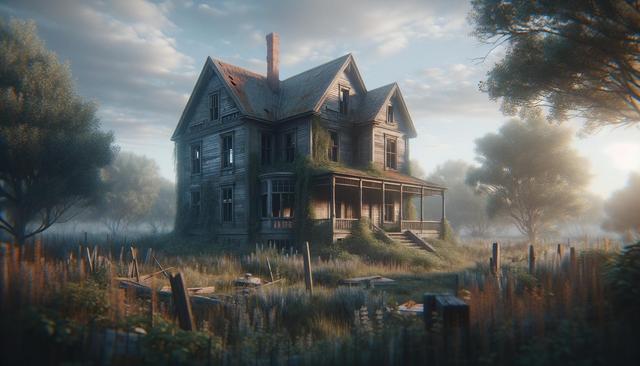
What Happens to Abandoned Houses?
Understanding What Happens to Abandoned Houses
When a house is left vacant and no longer maintained by its owner, it can quickly fall into a state of neglect. Abandoned houses are often the result of financial hardship, foreclosure, legal disputes, or even inheritance complications. Over time, these structures may deteriorate due to exposure to the elements, vandalism, or lack of upkeep. In many areas, local governments track these properties and may issue fines or even take ownership through legal channels if the property becomes a safety hazard. Despite these challenges, abandoned houses can present unique opportunities for redevelopment, especially in regions experiencing housing shortages or urban renewal efforts.
Common Challenges with Abandoned Properties
Taking on an abandoned house isn’t without its difficulties. Prospective buyers or renovators face several hurdles, including legal complexities and physical deterioration. Common issues with these properties include:
- Structural damage due to prolonged neglect
- Overgrown vegetation and pest infestations
- Unclear ownership or title disputes
- Back taxes and liens
- Potential for hazardous materials like asbestos or lead paint
These issues can make acquiring and restoring an abandoned home a time-consuming and costly process. However, with thorough research, proper planning, and the help of professionals such as real estate attorneys and home inspectors, many of these obstacles can be addressed and overcome.
The Potential for Restoration and Renewal
Despite the challenges, abandoned houses can offer remarkable potential for those willing to invest the time and effort. These homes are often located in established neighborhoods with historical charm and mature landscaping. With careful restoration, they can become unique living spaces or profitable investment properties. Renovators often find that older homes feature architectural details and craftsmanship that are rare in modern construction. When revitalizing an abandoned house, it’s important to consider:
- Preserving historical elements where possible
- Updating infrastructure like plumbing, electrical, and HVAC systems
- Enhancing energy efficiency with modern materials
- Adhering to local zoning and building codes
By respecting the home’s past and planning for its future, restorers can transform a derelict structure into a vibrant part of the community once more.
The Role of Local Communities and Governments
Communities and local governments play a critical role in addressing the issue of abandoned houses. Municipalities may implement programs to identify, regulate, or repurpose these properties. In many cases, local authorities work to prevent urban blight and ensure public safety. Some common initiatives include:
- Offering tax incentives or grants for rehabilitation projects
- Creating land banks to manage and sell vacant properties
- Partnering with non-profits for affordable housing solutions
- Enforcing property maintenance codes to prevent further decline
Community members can also contribute by reporting abandoned properties and participating in neighborhood improvement projects. Collective efforts can help turn neglected spaces into assets that benefit everyone in the area.
Tips for Prospective Buyers and Renovators
If you’re considering purchasing an abandoned house, preparation and research are key. Begin by investigating the property’s history and legal status. This includes checking for unpaid taxes, liens, or legal claims. A professional title search can uncover these details. Next, assess the physical condition with a qualified inspector who can identify critical repairs or safety concerns. Budgeting realistically is essential—renovation costs can easily exceed initial estimates, especially if unexpected problems arise. Consider the following tips:
- Secure financing options tailored for renovation projects
- Work with a contractor experienced in historic or extensive restorations
- Plan for contingencies and timeline extensions
- Engage with local authorities early to understand permit requirements
By following these steps, prospective renovators can mitigate risks and increase the chances of a successful transformation. While the process may be complex, the results can be deeply rewarding, both personally and financially.
Conclusion: Unlocking the Hidden Value in Abandoned Homes
Abandoned houses, though often overlooked, can become vital parts of a community’s renewal efforts. With thoughtful planning, community support, and a clear vision, these properties can be restored to serve new generations. Whether for personal residence, investment, or historic preservation, revitalizing an abandoned house is a meaningful endeavor that contributes to neighborhood revitalization and sustainable development. For those with patience and a passion for restoration, these forgotten structures offer a chance to build something lasting and unique.


